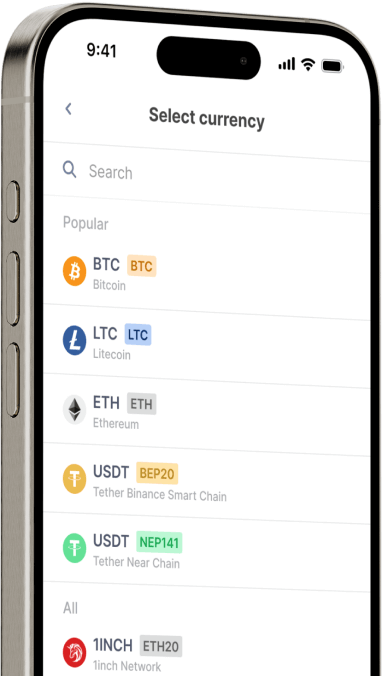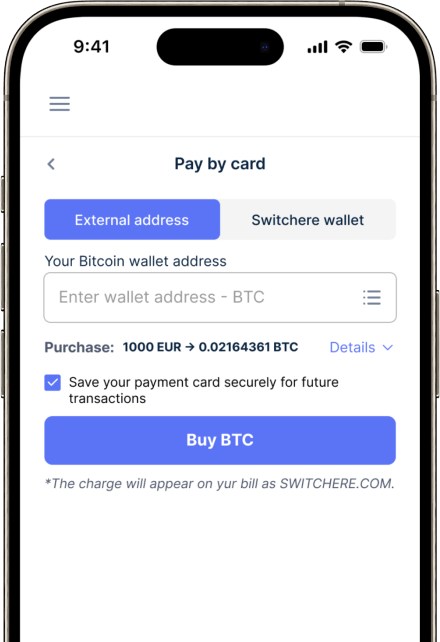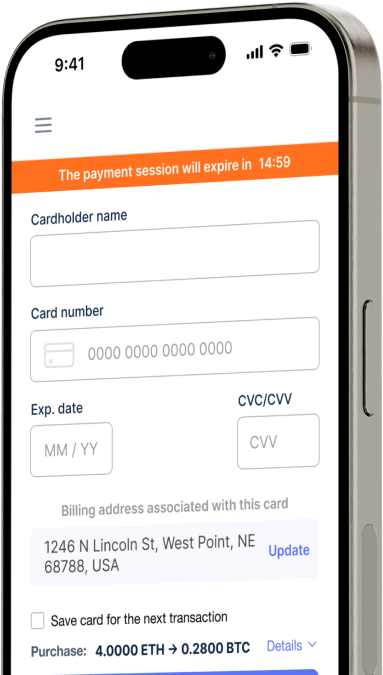Convert
Ukrainian Hryvnia (UAH) to Cartesi (CTSI) Instantly
Purchase Cartesi (CTSI) with Ukrainian Hryvnia (UAH) easily at Switchere and benefit from fast, secure transactions.
About
Cartesi (CTSI)
Cartesi (CTSI) is a Layer-2 infrastructure platform designed to resolve the critical issue of computational scalability and high costs on blockchain networks. Often referred to as "The Blockchain OS," its primary objective is to enable decentralized applications (dApps) with complexities that rival their centralized Web2 counterparts. Cartesi achieves this by allowing developers to build smart contracts and dApps within a full Linux operating system environment, utilizing mainstream programming languages and software stacks. This approach significantly lowers the barrier to entry for developers transitioning from Web2 to Web3, fostering a richer and more powerful dApp ecosystem built on robust blockchain technology.
The core of the platform is the Cartesi Machine (CM), a deterministic virtual machine that executes intensive computations off-chain. By leveraging Optimistic Rollups, Cartesi can process these complex calculations externally while anchoring the results with cryptographic security on the underlying Layer-1 blockchain, such as Ethereum. This hybrid model provides the immense computational power of off-chain processing with the verifiable trust of an on-chain digital ledger. The native utility token, CTSI, is integral to the network's tokenomics. It is used for staking within Cartesi's Noether Proof-of-Stake (PoS) sidechain, where node runners help secure the network and earn rewards. CTSI also functions as the payment method for computation and data availability services within the ecosystem.
Buy Other 150+ Cryptocurrencies for Ukrainian Hryvnia (UAH)
Other Coins for Ukrainian Hryvnia (UAH)
-
UAH to ZRX
-
UAH to 1INCH
-
UAH to AAVE
-
UAH to ACH
-
UAH to ALGO
-
UAH to TLM
-
UAH to ANKR
-
UAH to APE
-
UAH to NFT
-
UAH to API3
-
UAH to APT
-
UAH to ARPA
-
UAH to AUDIO
-
UAH to AVAX
-
UAH to AVAX
-
UAH to AXS
-
UAH to BADGER
-
UAH to BAL
-
UAH to BNT
-
UAH to BAT
-
UAH to BNB
-
UAH to BSW
-
UAH to BSV
-
UAH to BLUR
-
UAH to BONE
-
UAH to CTSI
-
UAH to CELR
-
UAH to CELO
-
UAH to CEL
-
UAH to LINK
-
UAH to CHZ
-
UAH to CHR
-
UAH to C98
-
UAH to COMP
-
UAH to CFX
-
UAH to PEOPLE
-
UAH to CVX
-
UAH to ATOM
-
UAH to CTC
-
UAH to CRV
-
UAH to DAI
-
UAH to DASH
-
UAH to MANA
-
UAH to DENT
-
UAH to DGB
-
UAH to DYDX
-
UAH to XEC
-
UAH to EOS
-
UAH to ETC
-
UAH to ENS
-
UAH to ETHW
-
UAH to FET
-
UAH to FIL
-
UAH to FLOKI
-
UAH to GALA
-
UAH to GNO
-
UAH to ONE
-
UAH to HBAR
-
UAH to HOT
-
UAH to HOOK
-
UAH to ICX
-
UAH to ILV
-
UAH to IMX
-
UAH to INJ
-
UAH to ICP
-
UAH to IOST
-
UAH to IOTX
-
UAH to JASMY
-
UAH to JST
-
UAH to KAVA
-
UAH to KCS
-
UAH to KSM
-
UAH to KNC
-
UAH to LDO
-
UAH to LQTY
-
UAH to LPT
-
UAH to LOOKS
-
UAH to LRC
-
UAH to LUNA
-
UAH to MKR
-
UAH to MASK
-
UAH to EGLD
-
UAH to ALICE
-
UAH to NEAR
-
UAH to XEM
-
UAH to NEXO
-
UAH to NOT
-
UAH to NMR
-
UAH to OKB
-
UAH to OMG
-
UAH to ONT
-
UAH to EDU
-
UAH to OP
-
UAH to OGN
-
UAH to CAKE
-
UAH to PAXG
-
UAH to PENDLE
-
UAH to DOT
-
UAH to POL
-
UAH to QTUM
-
UAH to QNT
-
UAH to RDNT
-
UAH to XRD
-
UAH to RVN
-
UAH to REN
-
UAH to RSR
-
UAH to RLC
-
UAH to RPL
-
UAH to SFP
-
UAH to SHIB
-
UAH to SKL
-
UAH to SXP
-
UAH to STND
-
UAH to STG
-
UAH to XLM
-
UAH to GMT
-
UAH to STORJ
-
UAH to STMX
-
UAH to SUSHI
-
UAH to SNX
-
UAH to USDT (Polygon)
-
UAH to USDT (AVAC)
-
UAH to USDT (BEP20)
-
UAH to USDT (ERC20)
-
UAH to USDT (SPL)
-
UAH to USDT (NEP141)
-
UAH to USDT (FA2)
-
UAH to USDT (TRC20)
-
UAH to USDT (JETTON)
-
UAH to XTZ
-
UAH to GRT
-
UAH to SAND
-
UAH to TFUEL
-
UAH to THETA
-
UAH to RUNE
-
UAH to TON
-
UAH to TUSD (BEP20)
-
UAH to TUSD (TRC20)
-
UAH to TWT
-
UAH to UOS
-
UAH to UMA
-
UAH to UNI
-
UAH to USDC (Polygon)
-
UAH to USDC (SPL)
-
UAH to USDC (OP)
-
UAH to USDC (BEP20)
-
UAH to USDC (AVAC)
-
UAH to USDC (ARB)
-
UAH to USDC (ERC20)
-
UAH to VET
-
UAH to VRA
-
UAH to WAXP
-
UAH to WOO
-
UAH to WLD
-
UAH to WBTC
-
UAH to WMINIMA
-
UAH to XDC
-
UAH to YFI
-
UAH to YGG
-
UAH to ZIL
How to Buy Cartesi (CTSI)
Frequently Asked Questions
-
What are the common methods to buy Cartesi (CTSI) with Ukrainian Hryvnia (UAH)?
To buy the CTSI digital asset with UAH, investors typically use centralized cryptocurrency exchanges that offer UAH as a fiat on-ramp. This often involves a P2P (peer-to-peer) market where you can use Ukrainian bank transfers, such as Privat24 or Monobank, to purchase crypto. Another method is to use a credit/debit card on an exchange, though this may have higher fees. Always ensure the platform has sufficient liquidity for the UAH/CTSI pair and complies with KYC/AML regulations.
-
What is the utility of the CTSI token within the Cartesi ecosystem?
The CTSI token is central to Cartesi's network operations. Its primary utility is for staking within Cartesi's Noether Proof-of-Stake (PoS) side-chain, where stakers help secure the network and earn rewards. Additionally, CTSI is used to pay for transaction fees for processing data on the network, such as for Descartes Rollups. This creates a direct link between the token's demand and the utilization of Cartesi's verifiable computation technology.
-
What kind of fees can I expect when trading UAH for CTSI?
Trading UAH for CTSI typically involves several potential fees. First, there might be a deposit fee for funding your account with UAH, especially with card payments. Second, the cryptocurrency exchange will charge a trading fee, often structured as a maker/taker fee based on the order book. Finally, when you move your CTSI tokens to a private digital wallet, you will incur a blockchain transaction fee (gas fee) for the withdrawal, which varies depending on network congestion.
-
What is the core technology of Cartesi (CTSI) that makes it stand out?
Cartesi is known as 'The Blockchain OS' because its core technology, the Cartesi Machine, is a self-contained Linux virtual machine. This allows developers to build decentralized applications (dApps) using mainstream software stacks instead of blockchain-specific languages. It acts as a Layer-2 scaling solution using optimistic rollups to perform complex computations off-chain, which are then verifiably settled on the main blockchain, significantly enhancing dApp scalability and computational power.
-
Are there specific security practices for storing CTSI tokens after a UAH purchase?
Yes. After acquiring CTSI through a fiat gateway with UAH, it is highly recommended to transfer your digital assets from the exchange to a personal digital wallet where you control the private keys. For maximum security, a hardware wallet is the best option. Always enable two-factor authentication (2FA) on your exchange account and be vigilant against phishing scams. Never share your private keys or seed phrase with anyone.
-
Why might a developer choose Cartesi's Blockchain OS for a new dApp project?
Developers are drawn to Cartesi because it significantly lowers the barrier to entry for dApp development. By providing a full Linux environment via the Cartesi Machine, it allows them to code with familiar, mainstream libraries and programming languages. This avoids the steep learning curve of blockchain-specific languages like Solidity. Furthermore, its ability to handle complex and intensive computations off-chain makes it possible to build dApps that were previously too computationally expensive for other blockchain platforms, opening up new possibilities for decentralized applications.




